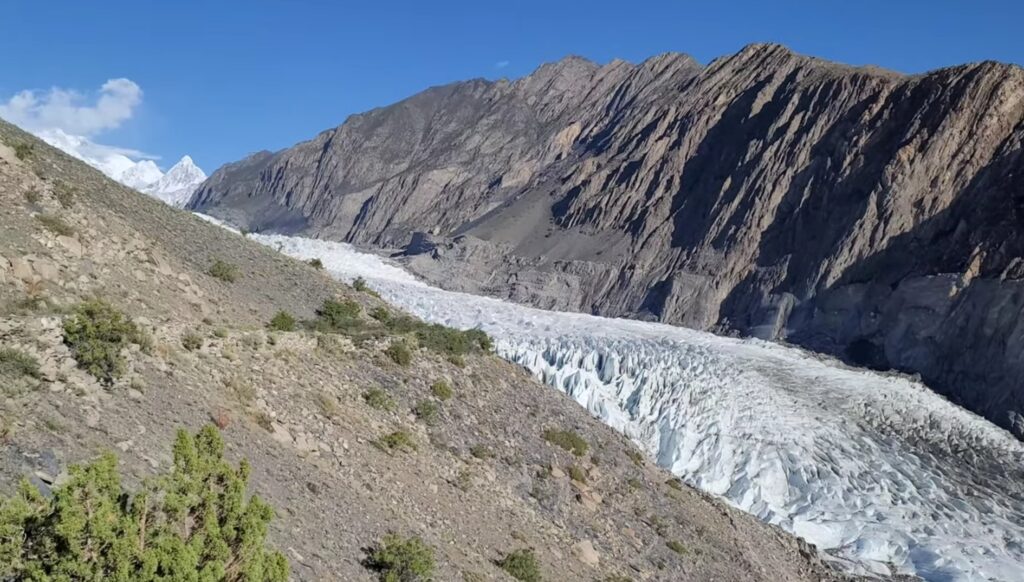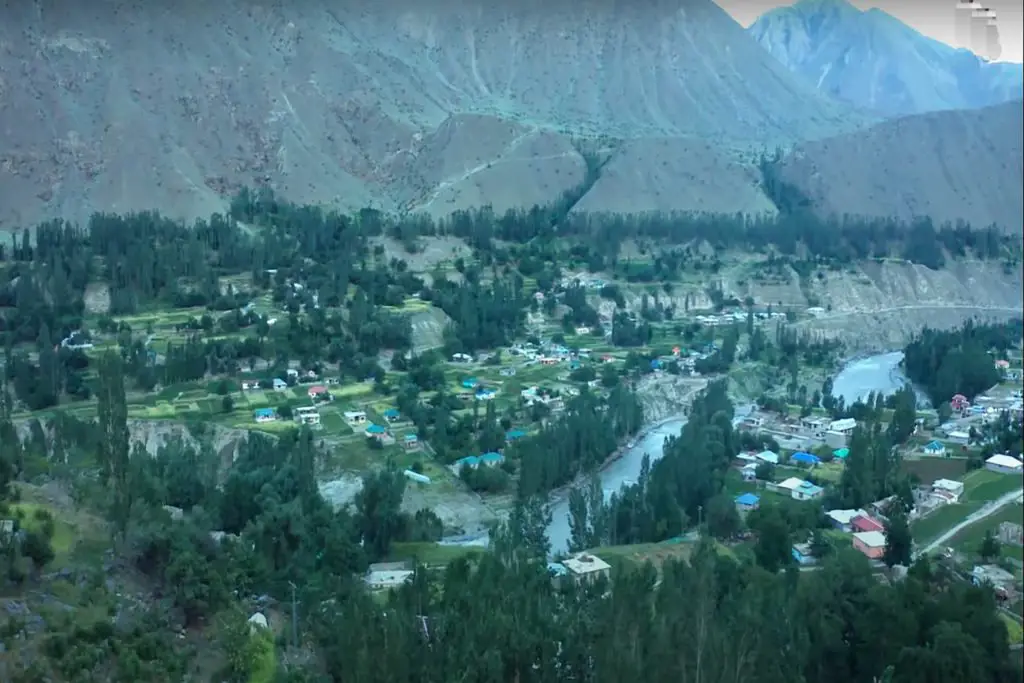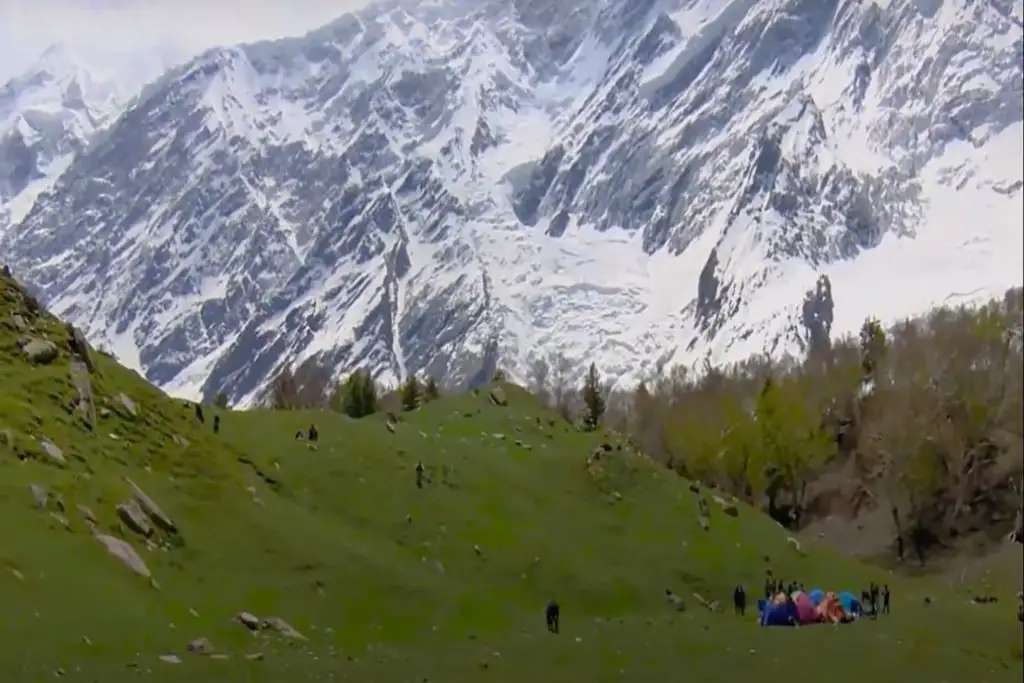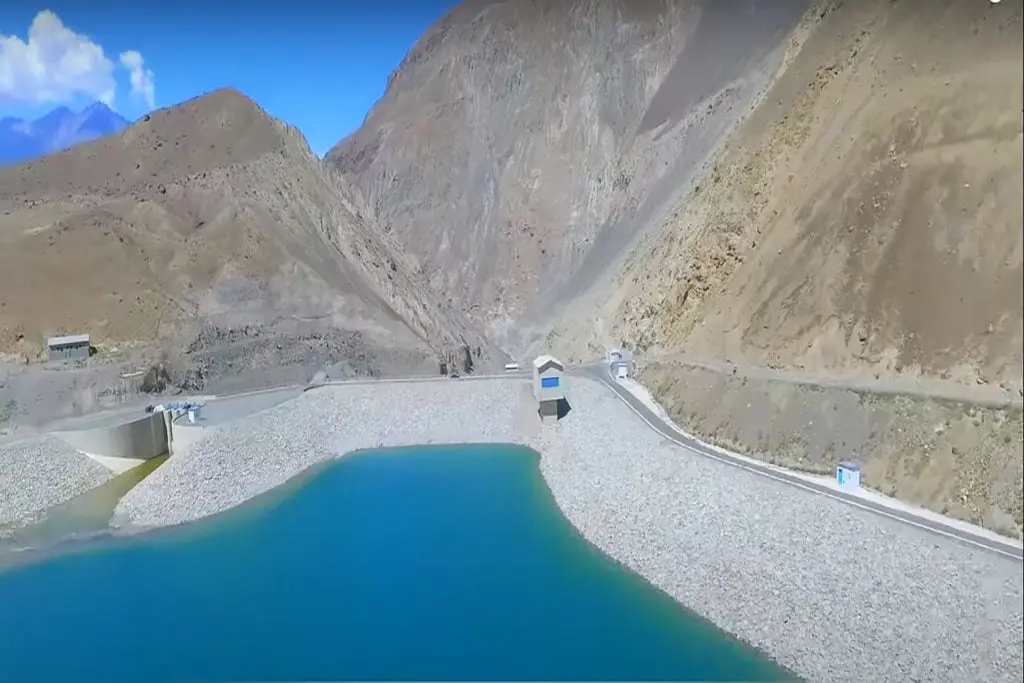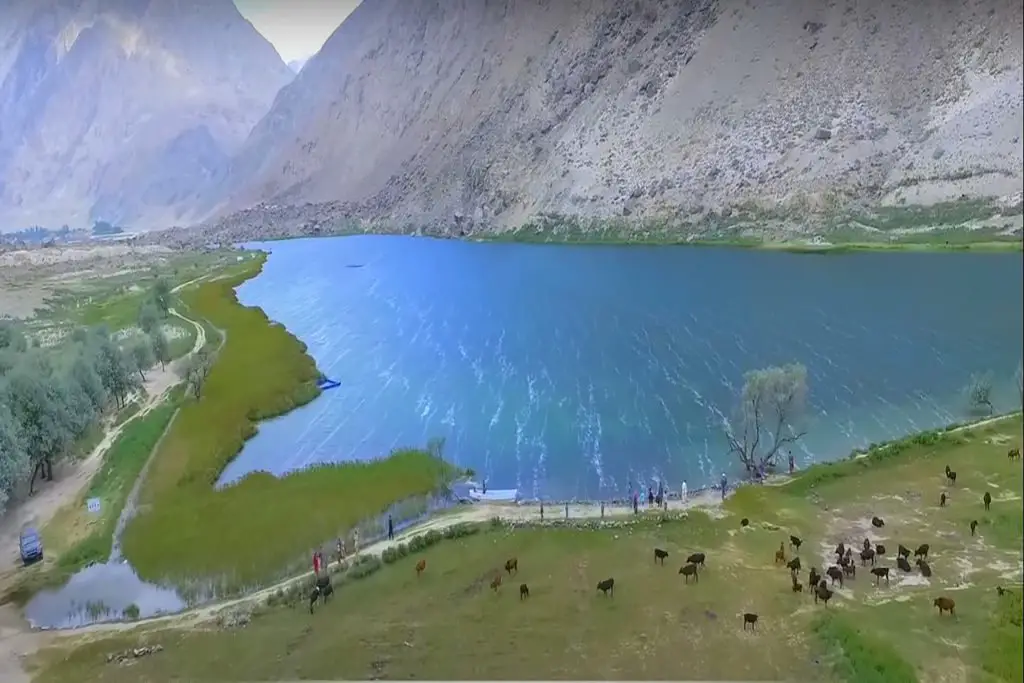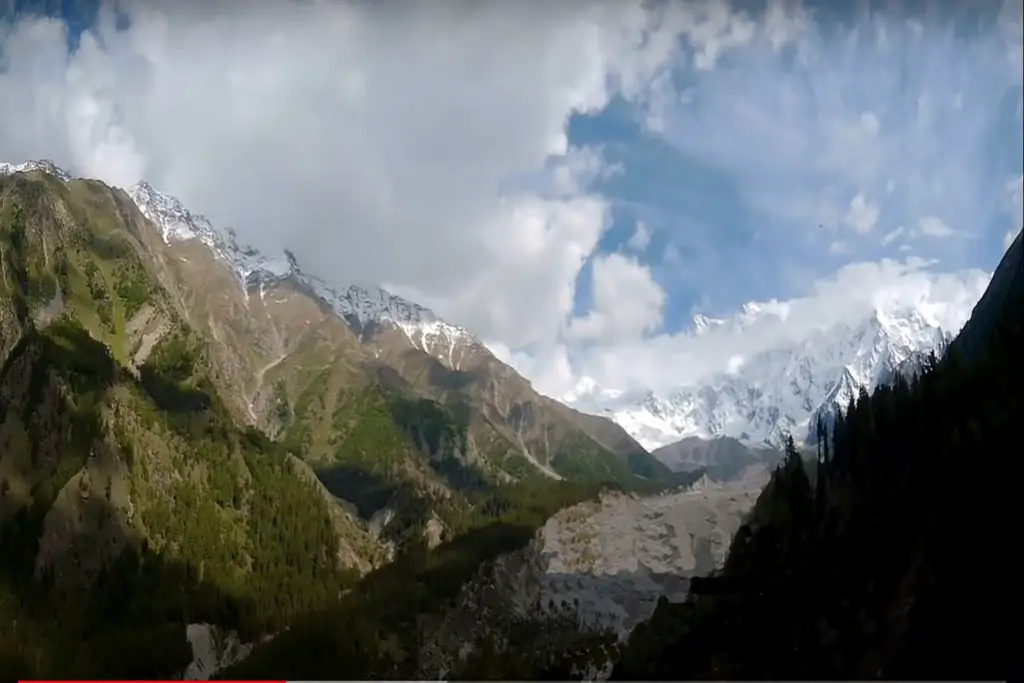The Passu Glacier is a famous Glacier due to its stunning natural beauty, with crystal-clear blue ice and stunning crevasses which create an unbelievable contrast against the surrounding rugged mountains. Passu Glacier is also home to a variety of Plants and wildlife which also includes rare and endangered species such as the snow leopard and the Marco Polo sheep.
Location of Passu Glacier
Passu Glacier is a spectacular glacier located in the Hunza Valley of the Gilgit-Baltistan region of Pakistan. It is a major tributary of the Batura Glacier, the fifth-longest glacier in the world outside of the polar regions.
Passu Glacier Length
The Passu Glacier is around 19 kilometers long and covers an area of approximately 56 square kilometers. The glacier is located at an altitude of 3,800 meters (12,500 feet) and is surrounded by towering peaks, including Passu Sar, Tupopdan Peak, and Shisper Peak.
Passu Glacier Height
The Passu Glacier is located at an altitude of approximately 3,800 meters (12,500 feet) above sea level in the Hunza Valley of the Gilgit-Baltistan region of Pakistan.
The Passu Glacier is fed by the snow and ice that accumulate in the surrounding mountains, and it moves slowly downhill over time. The glacier is an important source of water for the surrounding communities, and it plays a vital role in the local ecosystem.
However, like many glaciers around the world, Passu Glacier is also experiencing the effects of climate change. The glacier has been shrinking over the past few decades, and experts predict that it could disappear entirely within the next few decades if global warming continues at its current pace.
Hiking Passu Glacier
Hiking to Passu Glacier is a remarkable adventure that allows you to witness the beauty of the glacier up close. While it is possible to explore the glacier independently, it is recommended to hire a guide for a safer and more enjoyable experience, especially when venturing onto the glacier itself.
To reach the starting point of the hike, you have two options. The first option is to walk up from the main Karakoram Highway road on a dirt road, passing through villages adorned with fresh fruit gardens and the scenic Borith Lake. This walk typically takes 1-2 hours, depending on your fitness level.
The second option is to drive up if you have your own transport, which takes approximately 15 minutes. If you don’t have your own vehicle, you can hire a jeep at the turnoff for a fee of 1000 rupees for a one-way ride or 2000 rupees for a round trip.
An alternative approach is to take a car up to the starting point and hike back to the main road after exploring the glacier, provided you have your own vehicle or arrange for transportation. This allows you to enjoy a leisurely walk back while taking in the surrounding scenery.
At the beginning of the hike, there is a small outdoor scenic cafe where you can stop for a hot chai (tea) before or after your adventure. From there, the trail initially ascends for around 5 minutes before leveling out as you walk along the side of a cliff for approximately 10 minutes. During this stretch, you will catch your first proper view of the glacier. If you’re short on time, you can choose to admire the glacier from a distance, capture some photos, and then return.
However, if you have more time, continue walking for another 15 minutes until you reach a point where you can descend alongside an embankment. Follow the pipeline down to get a closer look at the glacier. While it is possible to walk on the glacier to some extent, exercise caution and avoid going too far without a guide as glaciers can be slippery and have sharp, uneven surfaces.
For those with sufficient time and a sense of adventure, the best option is to forego descending the embankment and instead continue uphill on the steep slope ahead. It takes approximately 30-45 minutes to reach the top, but the panoramic views from there make the effort worthwhile. As you proceed along the trail for a few more minutes, a short, steep climb brings you to the uppermost area of the glacier. From here, you can carefully scramble down and explore the fascinating crevices of the glacier.
Remember, it is crucial to have a guide when venturing onto the glacier as they possess the necessary experience to find a safe route across. If time permits, you can choose to cross the entire glacier. Alternatively, it can be equally enjoyable to explore a portion of it and soak in the unique icy landscape.
If you happen to visit during mid-September, you may have the opportunity to witness local farmers and herders guiding their cattle across the glacier as they transition from summer grazing pastures to the villages for the winter. This spectacle offers an insight into the traditional practices of the region.
To embark on the Passu Glacier hike, it is recommended to base yourself in the villages of Passu or Ghulkin, where you can easily arrange for a guide. Another option is to stay in Karimabad, the main tourist hub in the area, and drive approximately one hour to reach Passu Glacier. Your hotel or guesthouse should be able to assist you in hiring a guide, with the typical cost ranging from 1000 to 1500 rupees.
Hiking Passu Glacier is undoubtedly a must-do experience while in the Hunza Valley. If you’re short on time, make sure to at least visit the viewpoint for an hour to appreciate its beauty. However, if you have the opportunity to choose between Passu Glacier and the glaciers near Rakaposhi Base Camp further south in the Hunza Valley, many visitors find the Rakaposhi glaciers more impressive and the overall hike more rewarding.
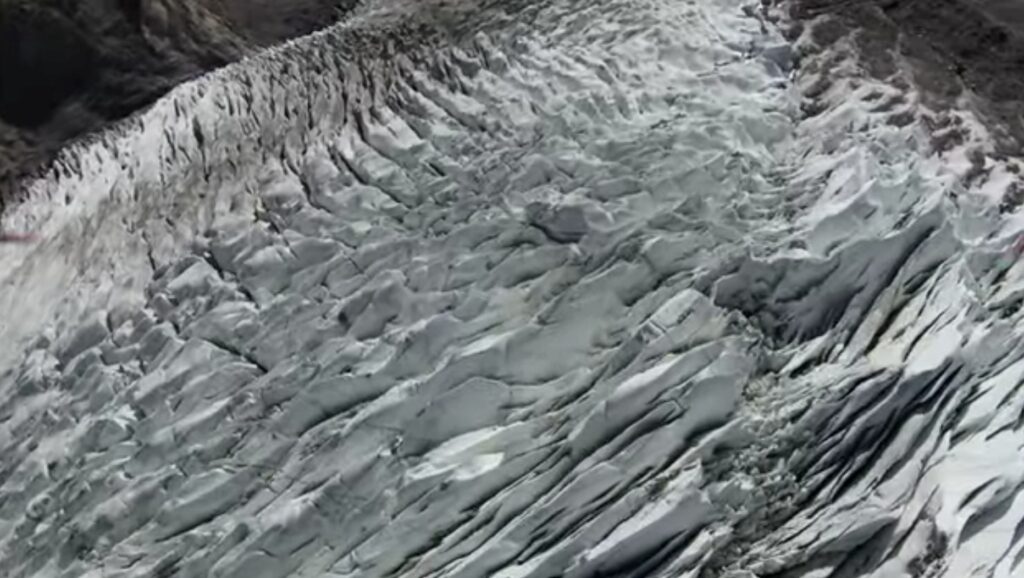
Despite the challenges posed by climate change, Passu Glacier remains a popular destination for tourists and adventurers alike. The glacier is surrounded by several small villages, each with its unique culture and traditions, and visitors can experience the rich heritage of the region while exploring the stunning natural beauty of the area. Adventurous travelers can also embark on a trek to the glacier, which takes them through picturesque valleys, across rushing rivers, and up steep mountain passes.
In conclusion, the Passu Glacier is a natural wonder that is not to be missed by anyone visiting the Hunza Valley. Its stunning beauty and vital ecological role make it a destination that is both awe-inspiring and educational. However, it is also a reminder of the urgent need to address the issue of climate change and protect our planet’s delicate ecosystems for future generations.

